
I would like to tell you about one more place near Nice. This is Villa Ephrucy de Rothschild. This is the villa of the daughter of Alphonse Rothschild, one of the representatives from the branch of the rich and nobility. Beatrice, the mistress of this villa, one of the four children of Rothschild, like all the rich, was engaged in collecting art and luxury. Now her villa is a point of attraction for hundreds of tourists a year. It is also the main attraction of Cape Saint-Jean Cap Ferrat.


I first learned about the existence of the extremely rich and powerful financial clan of the Rothschilds at school age when I had a volume with the works of the writer Sholom Aleichem in my hands. One of the stories collected in it was called “If I Were Rothschild”. The hero of the story - a poor teacher of a Jewish religious school, living in a place forgotten by God, dreamed of what he would do if he had as much money as Rothschild himself.
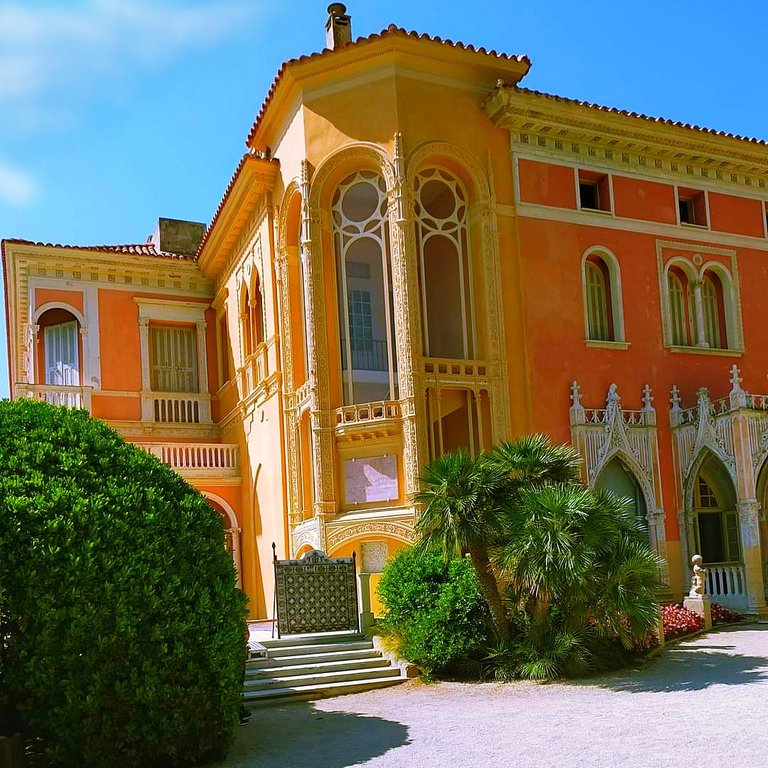
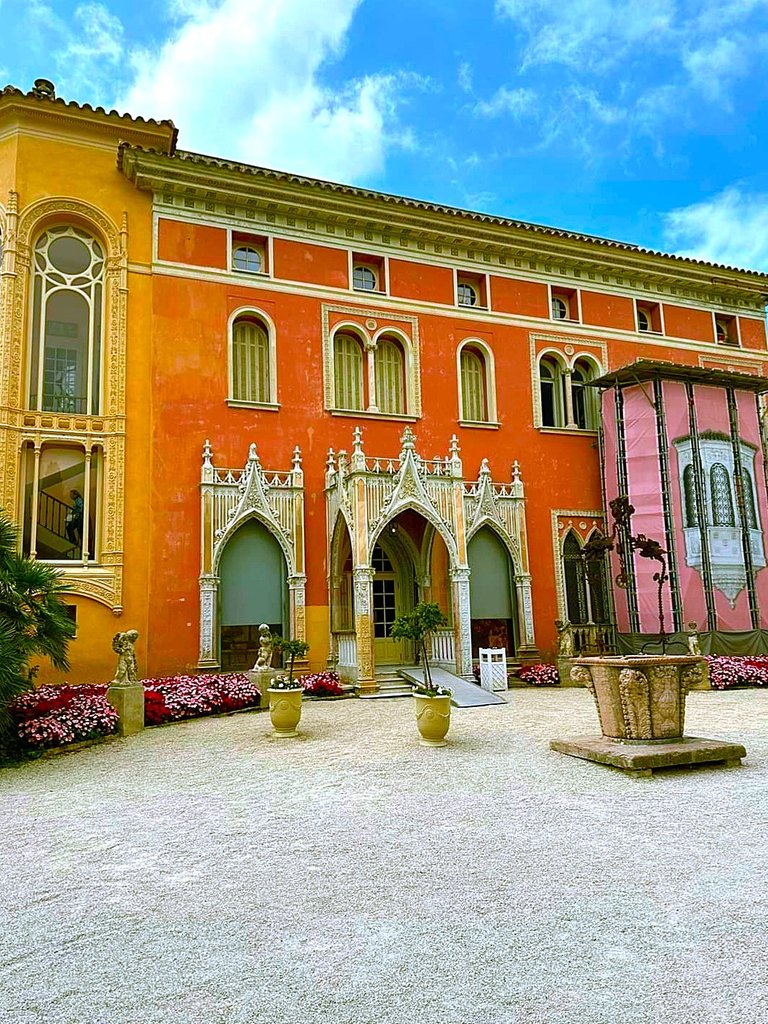
Children's curiosity on the topic "how did those Rothschilds live?" added the desire to get acquainted with the Cote d'Azur of France and at the same time travel back in time to the period that went down in history as the Belle epoque. Baroness Beatrice Ephrussi de Rothschild, the owner and, one might say, the chief designer of the Ile-de-France villa, is also among the outstanding personalities of that era.
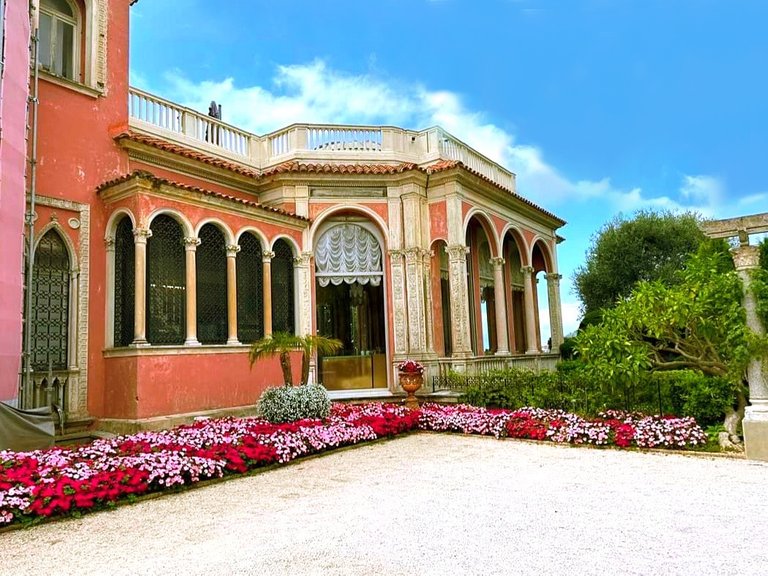
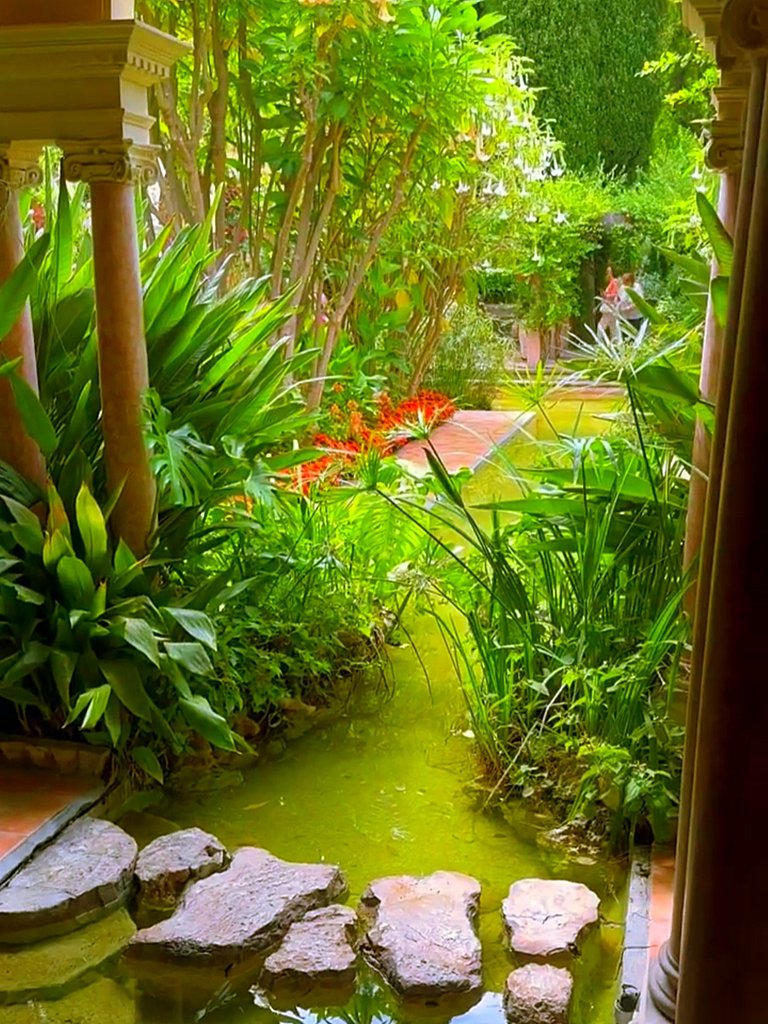
A piece of paradise with a necklace of wonderful gardens and an exquisitely finished building, created according to the plan and with the active participation of the Baroness, I consider it an invaluable architectural and park treasure of the Cote d'Azur.

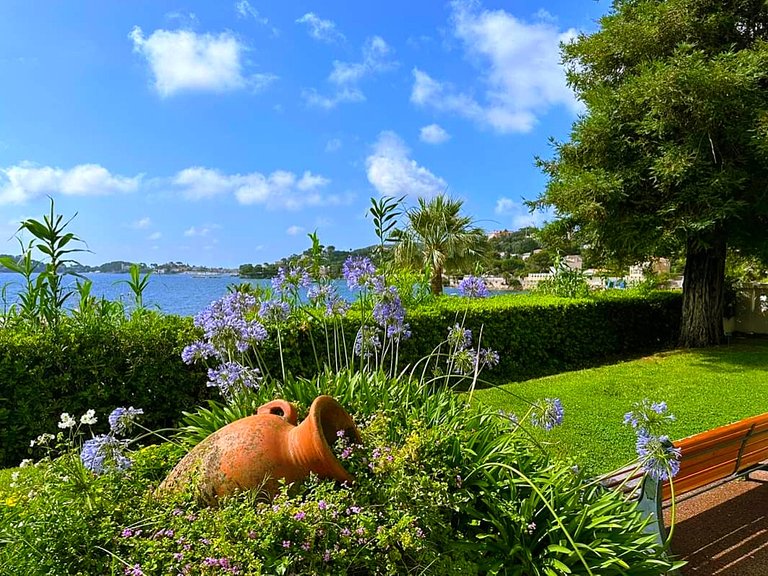
As for the geography, the villa is located in the vicinity of the respectable resort of Saint-Jean Cap-Ferrat, located about 10 kilometers southeast of Nice, next to the bays of Villefranche and Beaulieu. N81 runs from Nice to this place - we arrived there by car. The road from Nice to the villa is an impressive collection of postcard views: nature has not stinted on beauty for this fertile region.
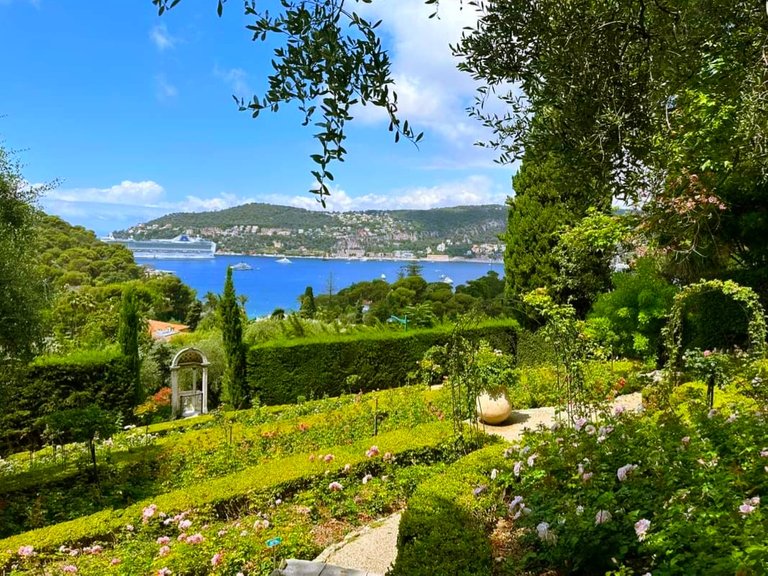
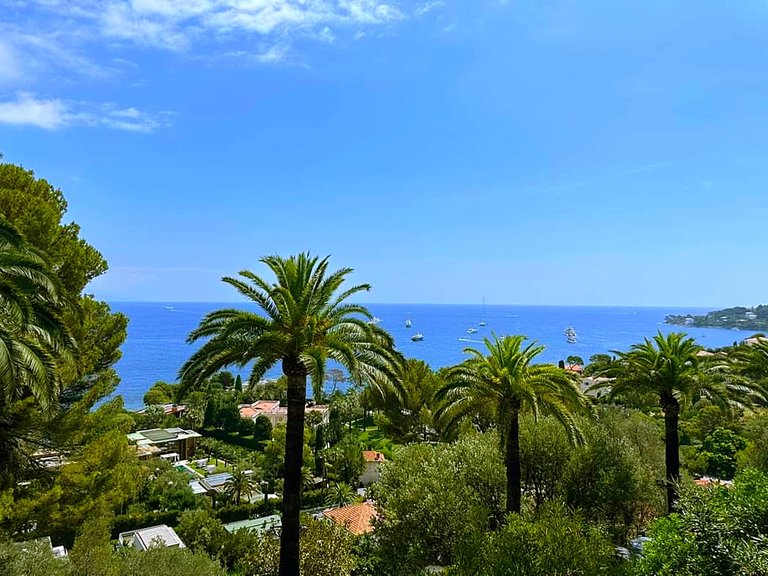
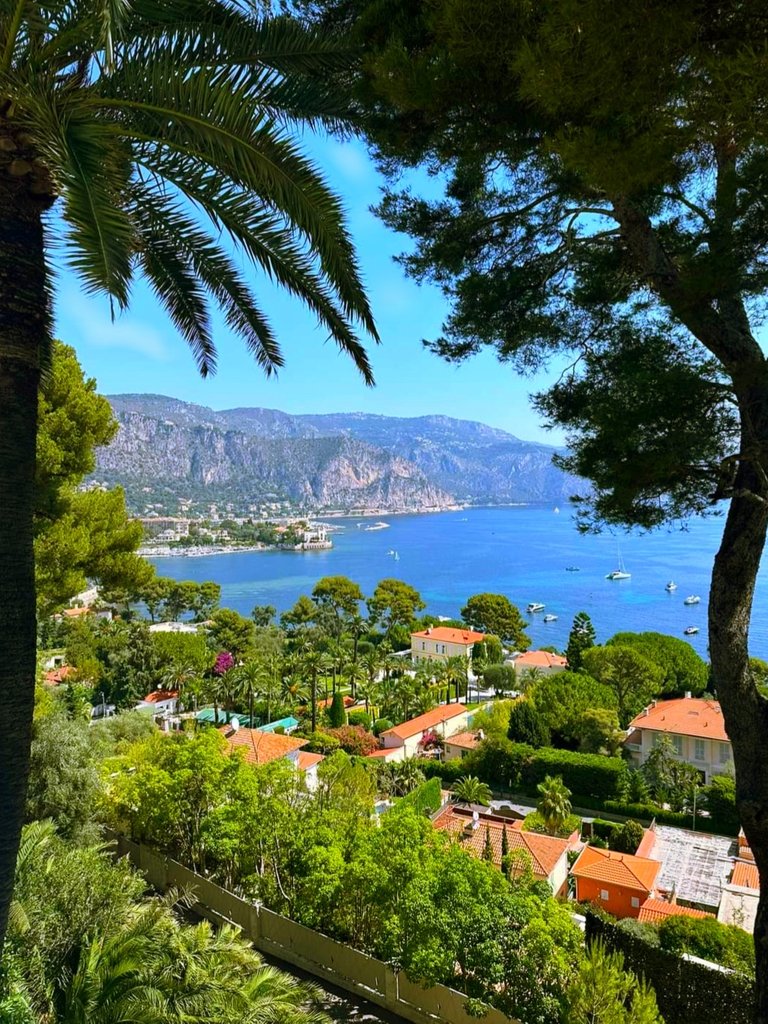
Parking at the villa is free but limited. Therefore, it is better to come to Ile-de-France in the morning, when there are enough parking spaces and the heat is not yet annoying. Entry to the villa is paid. But at the box office, we purchased not standard, but combined tickets. They entitle you to visit two villas at once. Please note that there are free audio guides in the villa, but they are issued on the collateral of an ID document.
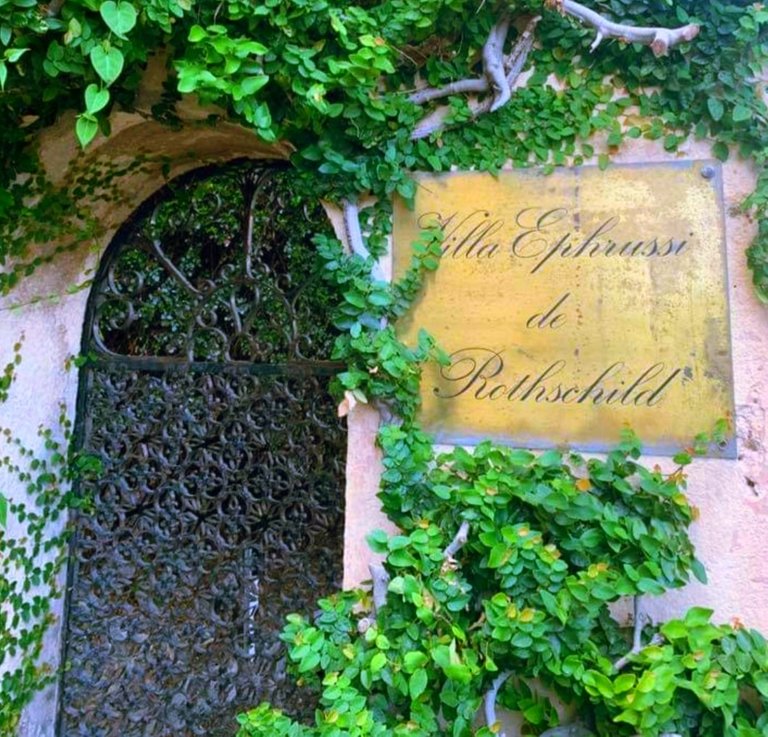
Beatrice de Rothschild chose a place for the villa, one might say, ideal: a picturesque bay on each side and no discomfort from the blowing wind. And the plot itself, with an area of 7 hectares, was intercepted by the Belgian King Leopold II, who also wanted to acquire this land.
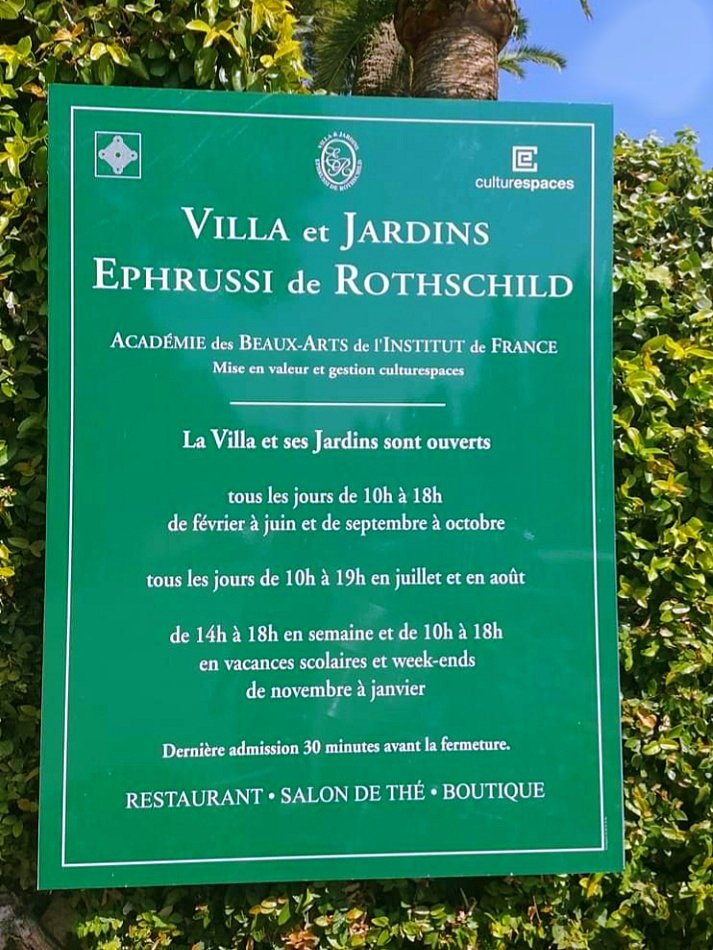
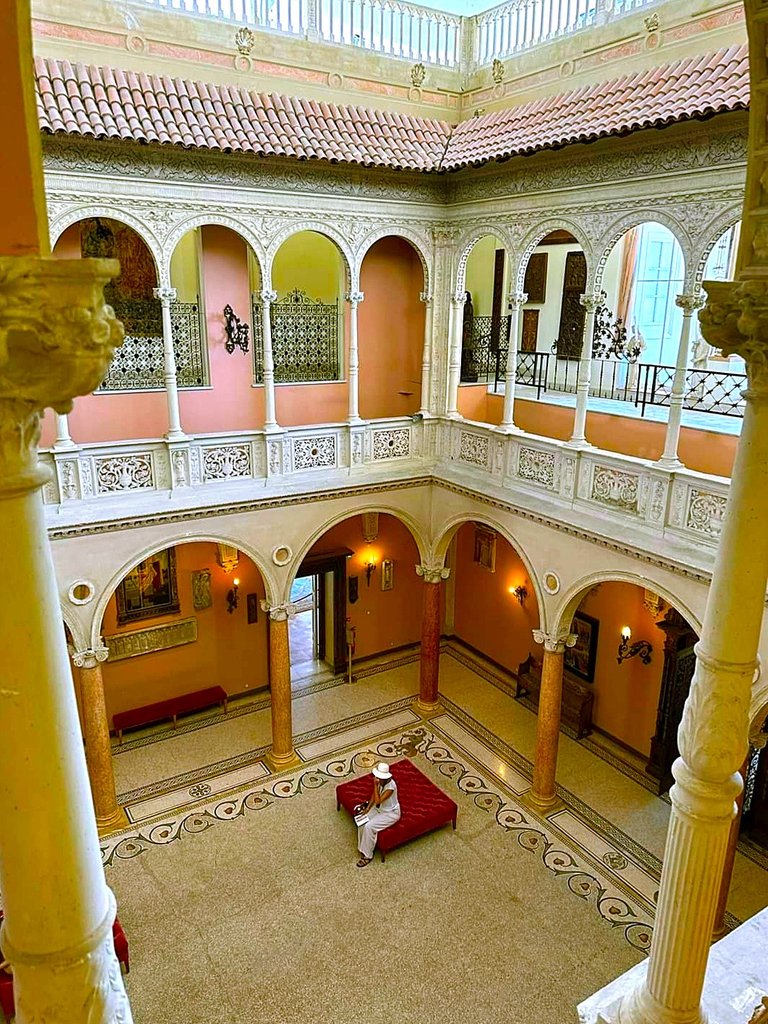
By origin, Beatrice belonged to the "Parisian" branch of the Rothschild dynasty. Her father, Alphonse de Rothschild, was a banker. Like many Rothschilds, including her grandfather James, Beatrice was fond of collecting art.
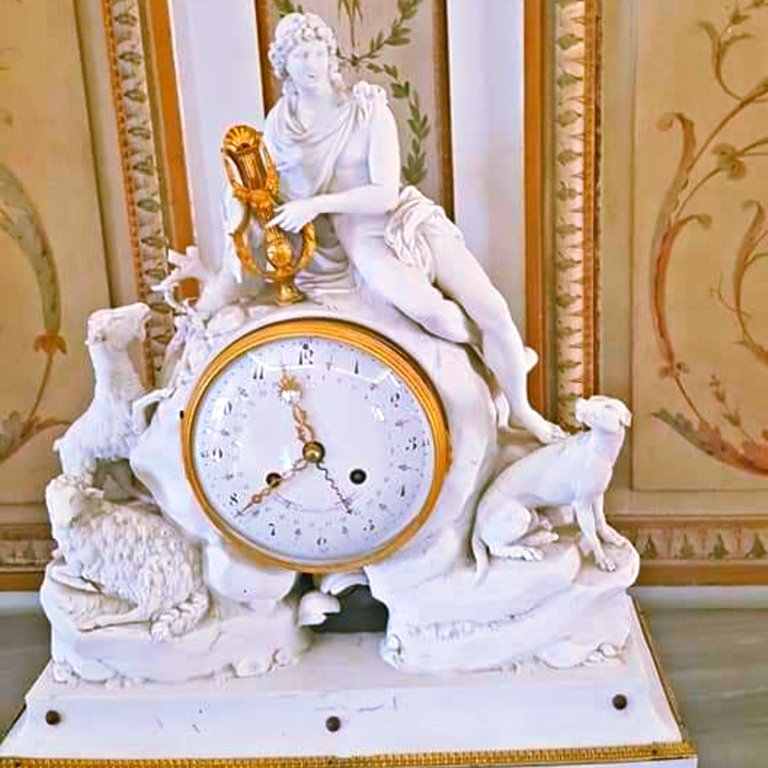

What did this mean in practice? People whose interests were related to this subject area were at least well versed in many things: in the technique of painting and sculpture of various eras, trends, masters and schools; in the features of the products of various porcelain manufactories; in jewelry, furniture, etc. Not to mention the knowledge of several languages, the history and cultural traditions of different countries.
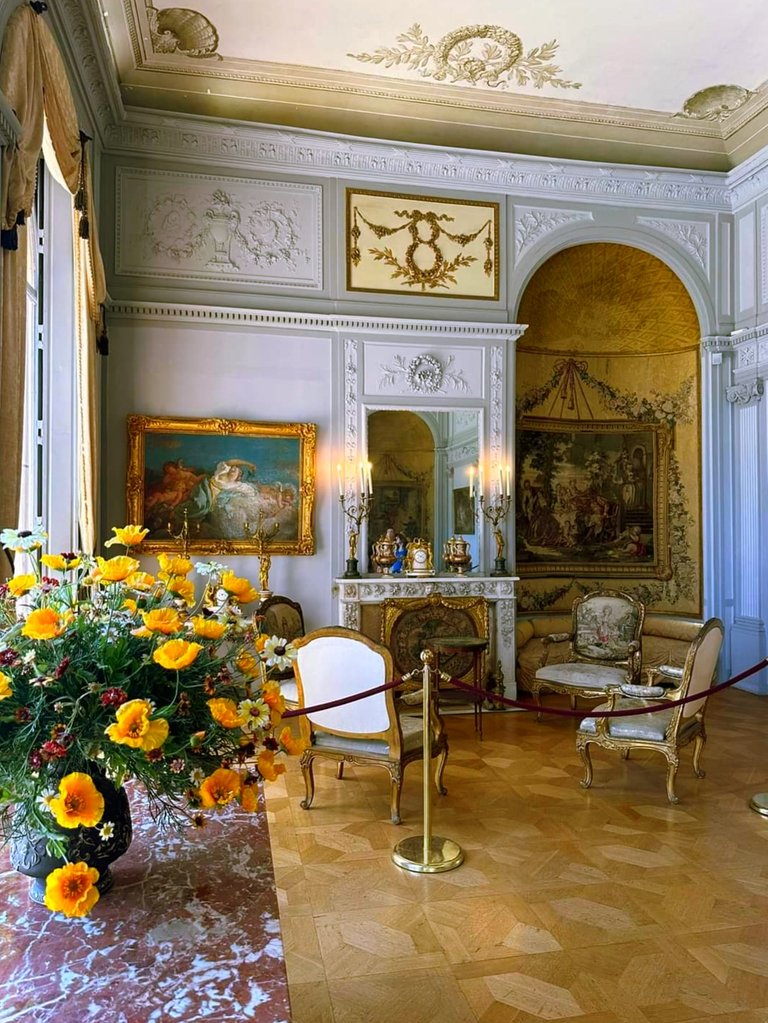

Despite the fact that young Beatrice enjoyed great success in the world, and her parents, for their part, did not impose any suitable “candidates” for marriage on her, she married a family friend - Maurice Ephrussi, a banker, oilman and philanthropist. Maurice was 15 years older than her, and Beatrice was 19 at the time. Theoretically, such a couple looked flawless. An absolutely well-known person, a representative of the same social stratum.
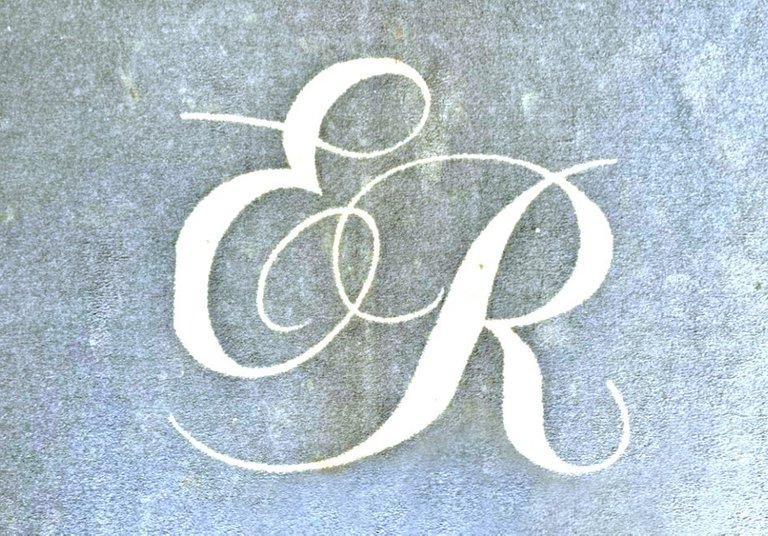
After the death of her father and her divorce, she acquires land on Cape Ferrat. It is known that the villa was built for more than seven years and Beatrice, dissatisfied with the construction, changed as many as twenty architects. The house was called the "French Island" and for a long time was only a winter residence.

But life breaks many carefully calculated calculations. Maurice's passion for gambling, perceived until a certain time as one of his innocent pastimes, stepped over a dangerous line. In fact, Maurice began to squander the family fortune. The size of his debts reached an amount equivalent, in terms of modern currency, to 30 million euros. Even with the immense money reserves of the Rothschilds, this was a wake-up call. But it was not only gambling (roulette and horse racing)! Maurice "gave" Beatrice a disease that forever deprived her of the opportunity to become a mother. As a result, after 21 years of marriage, Beatrice was forced to file for divorce.


Fleeing from the heartache of a failed family life, in 1905, Beatrice, with money inherited from her deceased father, begins to implement an incredibly complex and adventurous project to create a man-made personal paradise on Cap Ferrat.
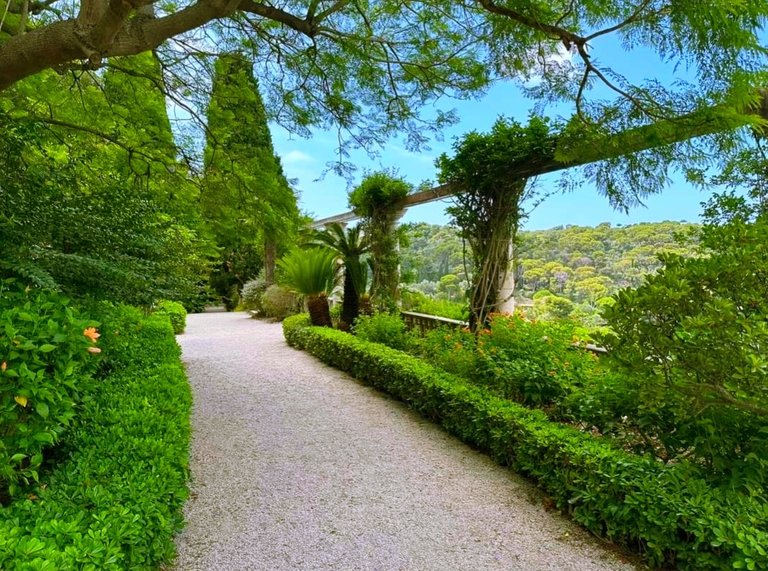
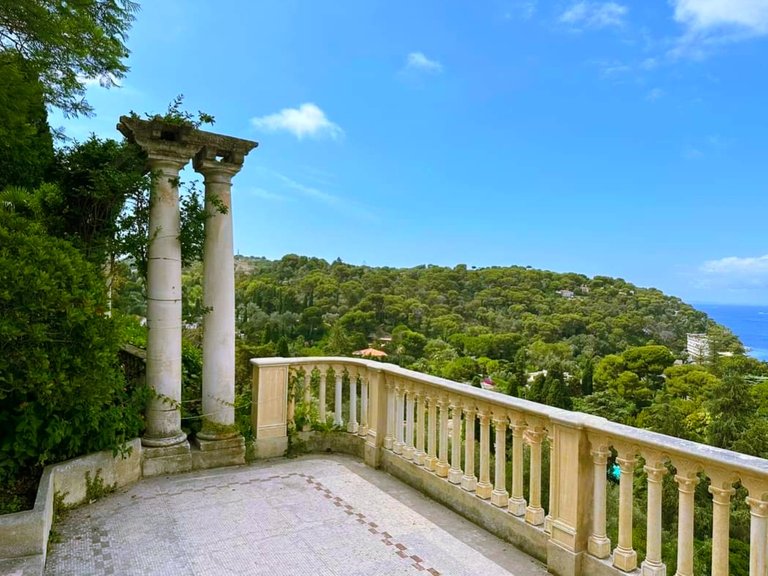
Here is such a peculiar version of "I Will Survive" by Beatrice de Rothschild. Seven years and twenty architects (and who had a reputation as masters in their field) changed like gloves: the bar was raised so high.

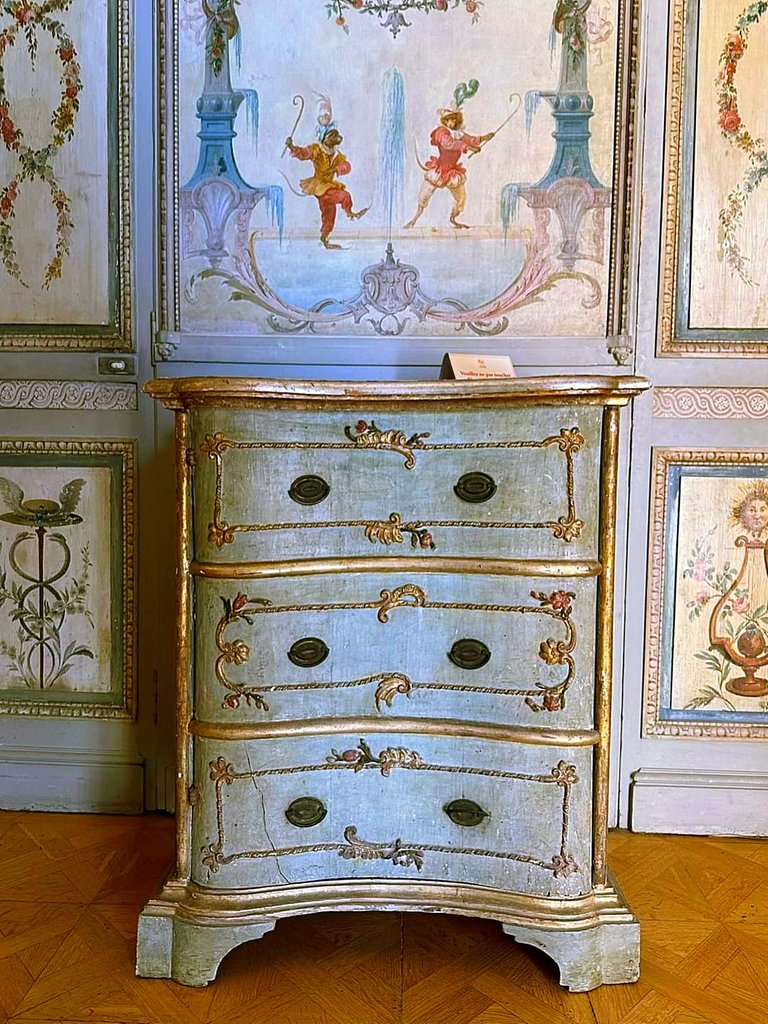
Judging by the interior of the villa, its host had excellent taste. It is also known that Beatrice was a fan of pink, too much of it in everything. It's known that during the construction she came to control the process herself, also in everything pink - in a pink dress and with pink accessories. Such were her quirks.


Gothic, Moorish, Florentine, Venetian styles, rococo, neoclassicism… It would seem crazy, flashy eclecticism. However, looking at the built palazzo, I was surprised at how exquisitely everything is arranged.
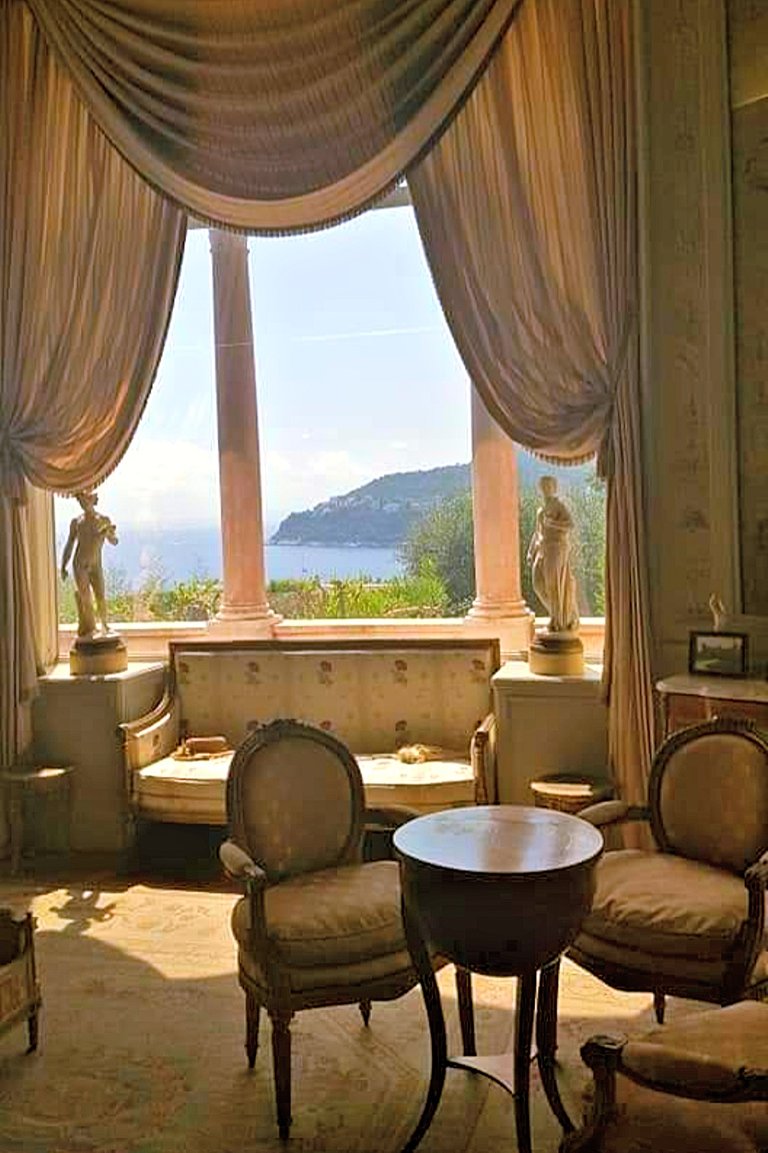
Like many visitors to the villa, we walked with great pleasure through all nine gardens, which smoothly flowed from one to another. Each garden is a vegetative-architectural portrait of a certain country or some of its regions (for example, Provencal), made with 100% authenticity. A number of sculptures and other decorations for the gardens Beatrice brought from her travels.
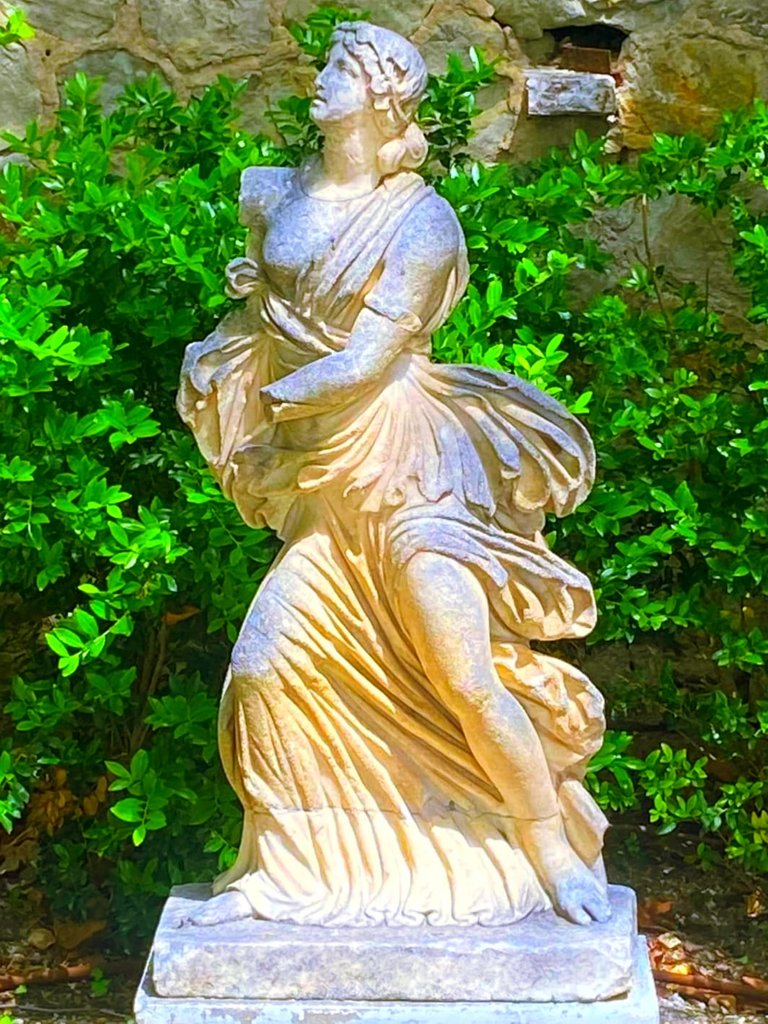

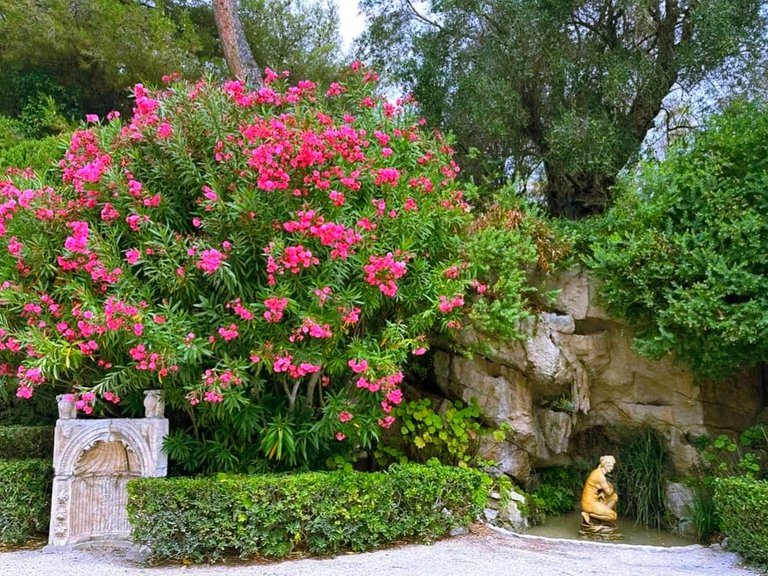
It's hard for me to give preference to any particular garden, but the top four gardens, in my opinion, are Spanish, Florentine, Japanese and French. The Spanish Garden can be reached through a gallery leading from the Sèvres Garden. Picturesque terrace with distinctive Spanish charm, grotto and narrow T-channel. What else do you need for solitude and peace?



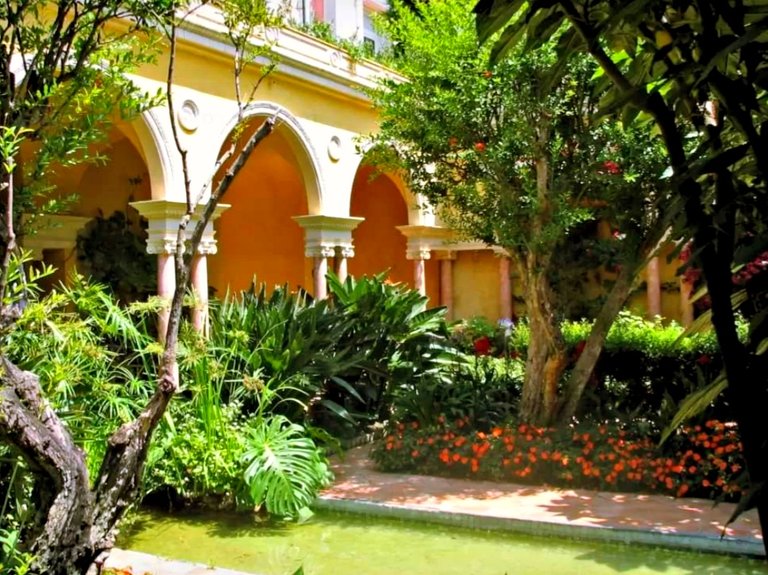
In general, I was impressed not so much by the gardens as by the process of their creation. I have already said that Beatrice found a great place for a future villa. But these words referred exclusively to the points on the map, the landscapes and climate. And according to the relief, the site was a rocky hill, overgrown with pine trees. The top of the hill, inconvenient for building and arranging gardens, was destroyed by dynamite. For future plants, fertile land was imported.
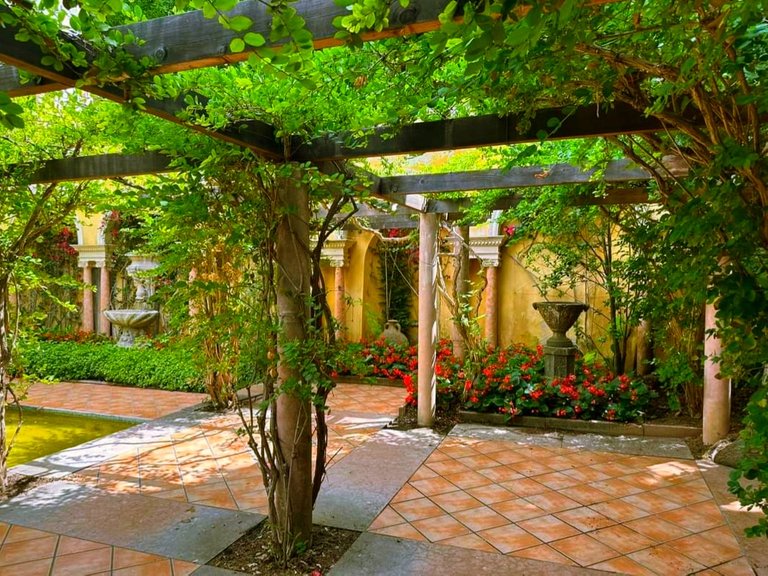
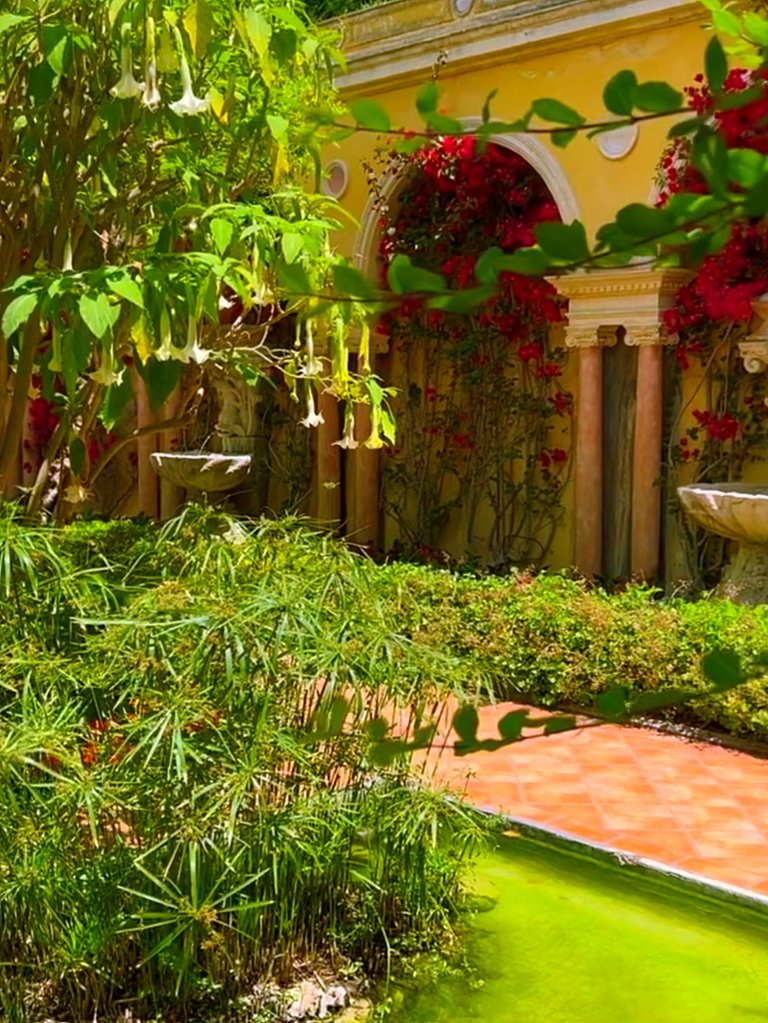
And how it was all designed - a separate song! The servants, who put on green cardboard pyramids, depicted future trees, moving at the command of the host to the places indicated by her. Planned paths, ponds, pools for fountains were marked with the help of fabrics, rolls of which were laid out on the ground. And all this, of course, was altered many times. Trees, shrubs and flowers for planting were selected by Beatrice herself, who knew a lot about not only art, but also gardening.
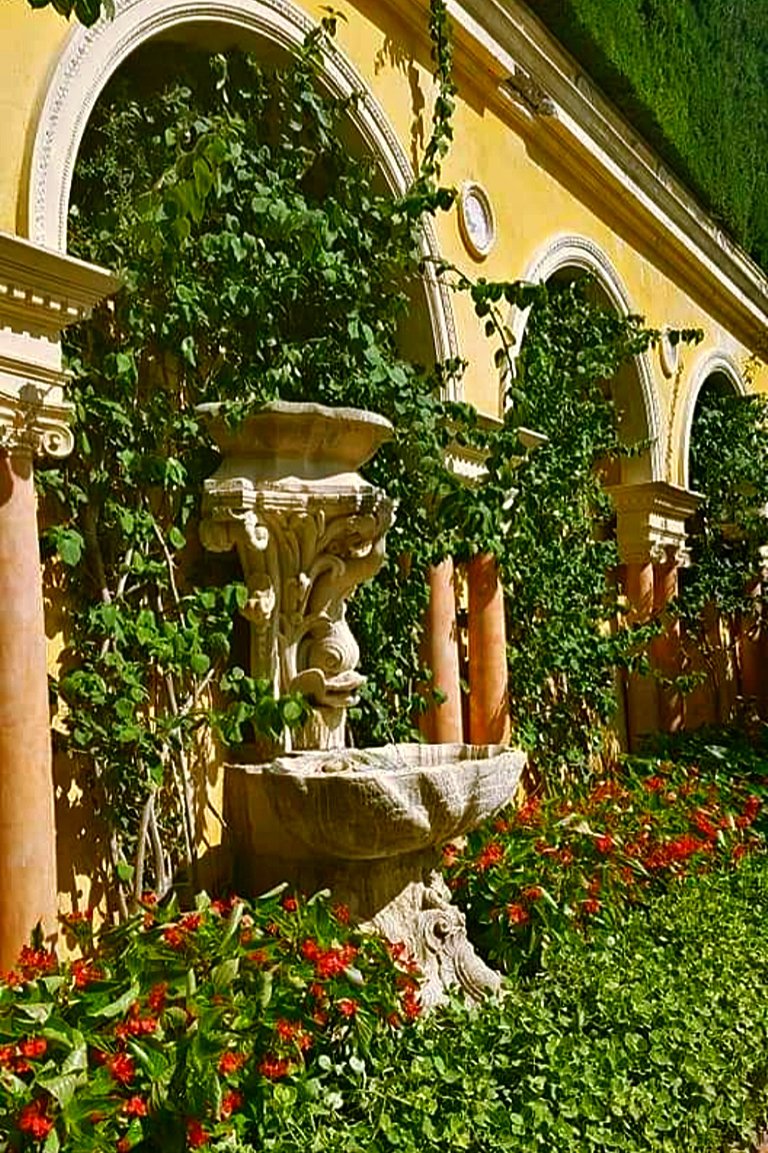
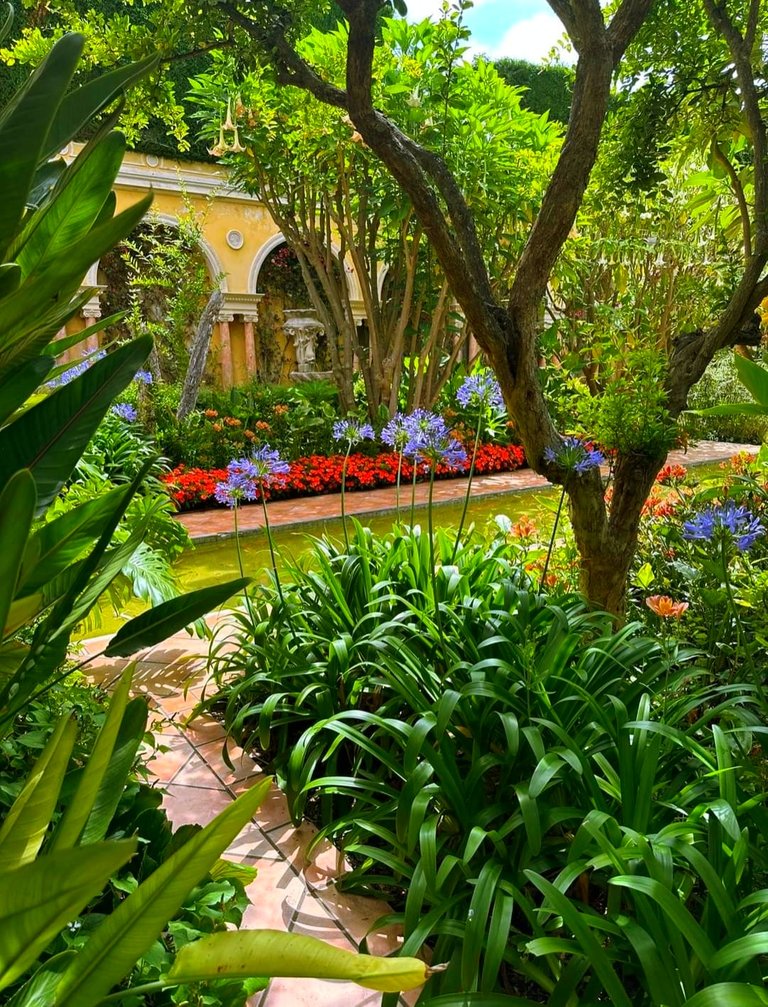
Behind the Spanish Garden begins the Florentine Garden. In the niche of a horseshoe-shaped staircase, typical for this Italian region, there is a statue of an angel with a broken wing.
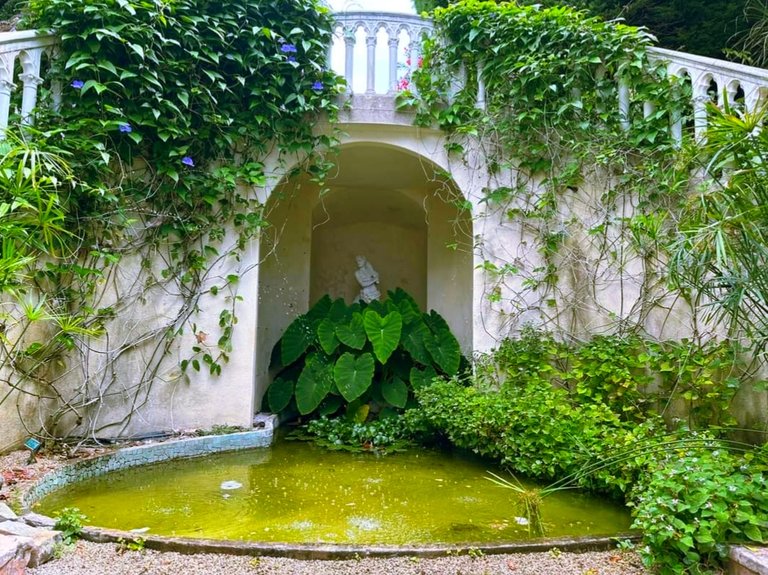
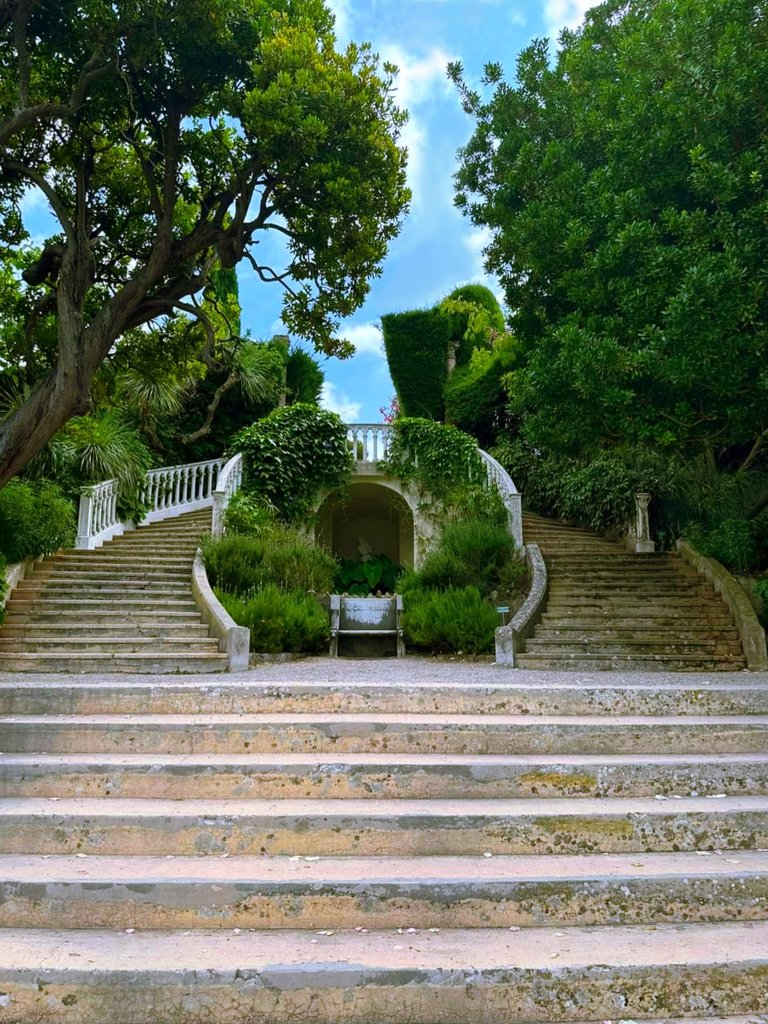
The Japanese garden, which begins behind the Stone Garden, is already a remake, created at the beginning of the 2000s by Professor Fukuhara on the site of a similar garden that previously existed here. It's a garden where people "listen to the even and pleasant sound of the waves at dusk". I like both Japanese gardens and Japanese poetry. Toro stone lanterns, grooved paths, greenery,including a small bamboo forest, and, as it should be according to the laws of the genre, a pond with red fishes.

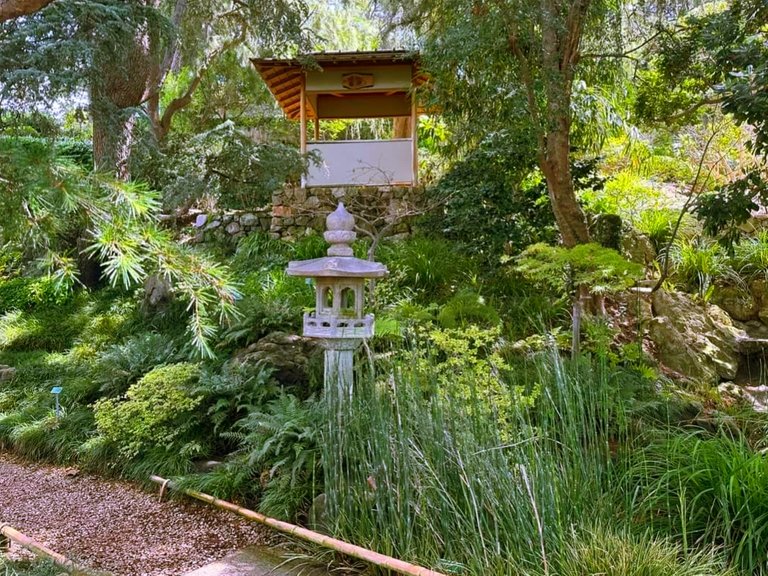
Then we went to a rose garden - it is not big, but also very beautiful. It is known that the owner of the villa gave roses a special place in her life. The rose was her favorite plant, and pink was her favorite color in the color palette.




The bright dominant of the garden complex is, of course, the French Garden with its white rotunda pavilion called “Temple of Love” and with a spectacular water cascade going down from it. In the "Temple of Love" - of course, they put the statue of Aphrodite. Also, she created the cutest personal Versailles with fountains and fountains "dancing" to classical music. But the best, in my opinion, views of this wonderful garden design composition are opened precisely from the windows of the palazzo. The Baroness had thought of every little detail!

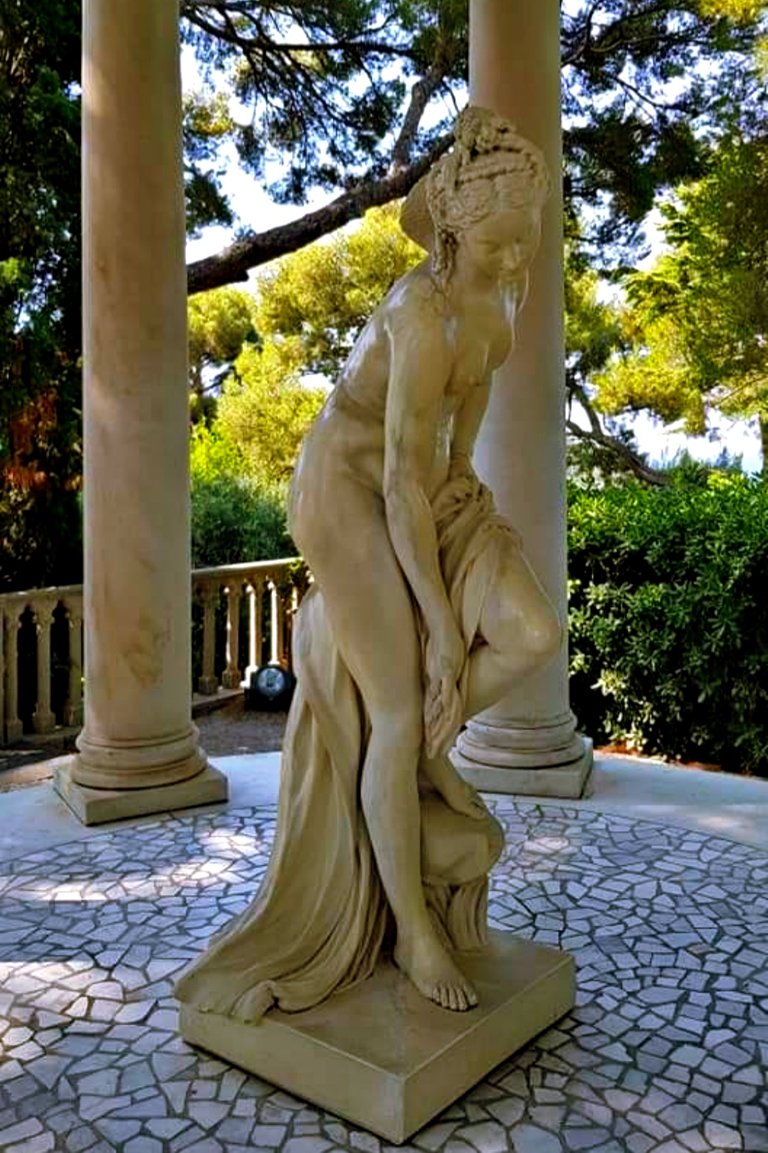
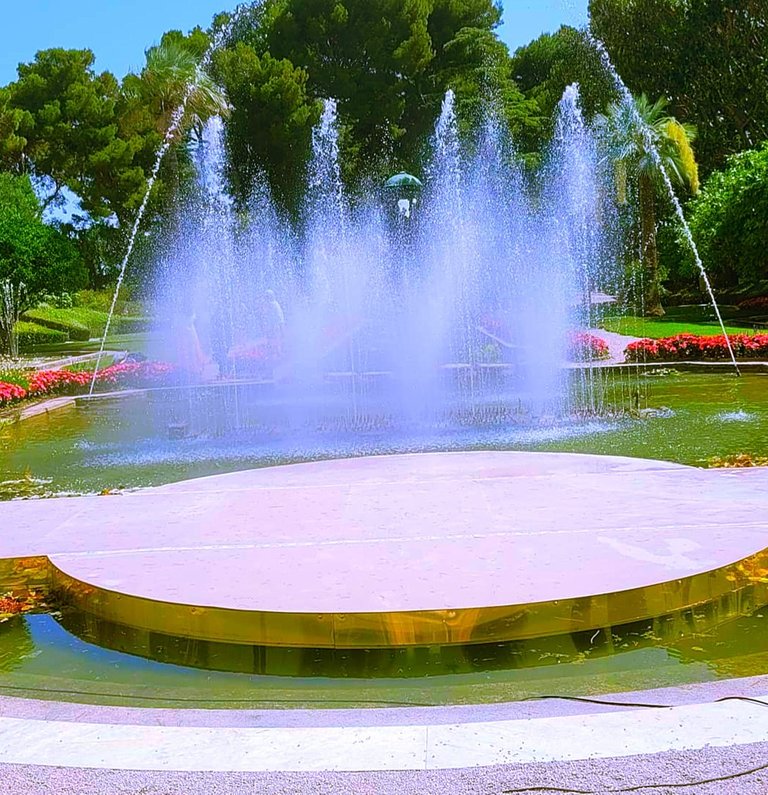
Formerly known as the Mexican Garden, now known as the Exotic Garden, it was almost destroyed during a severe frost in 1985. And so it was the kingdom of giant cacti and succulent plants.
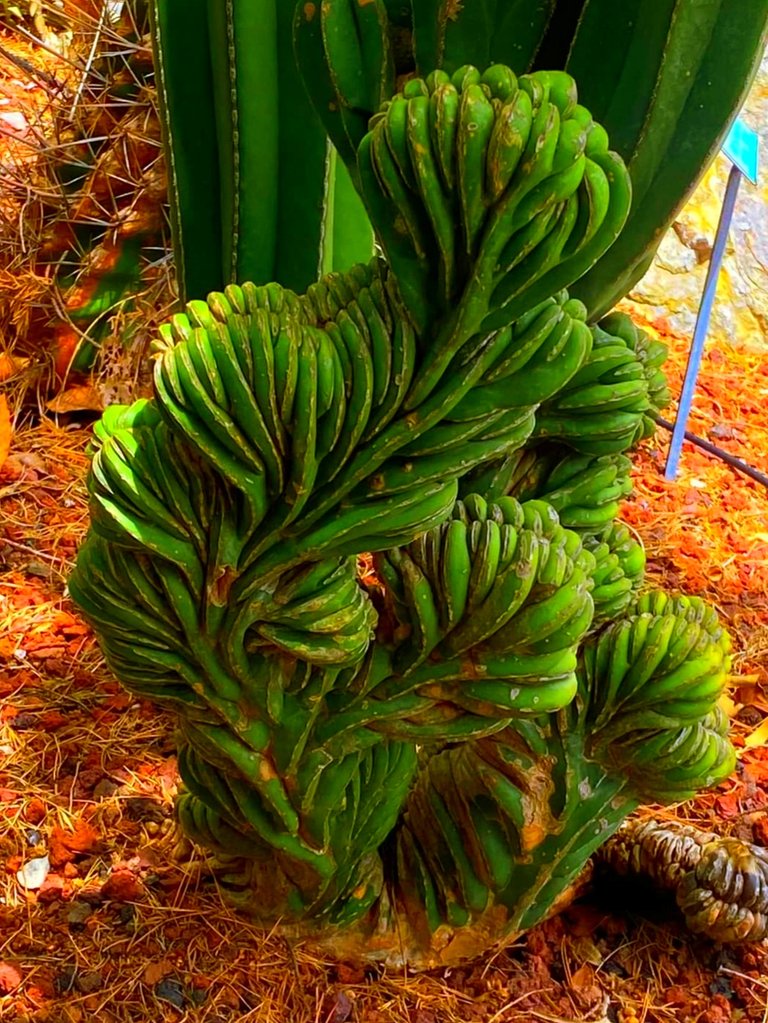

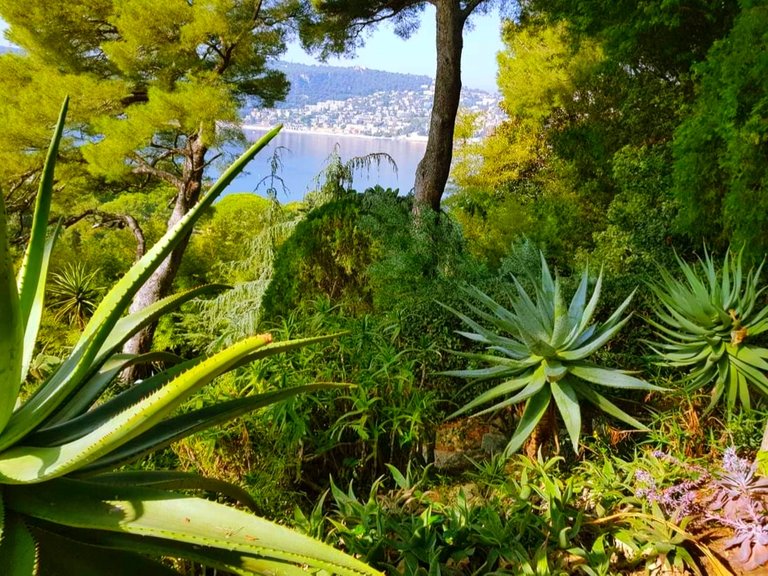
Getting to the patio of the villa, the walls of which were painted in the color of flamingo wings, I once again paid tribute to the taste of the host. The patio is the epitome of elegance. Almost seamless integration of Tuscany, Venice and Granada, Antiquity, Gothic and Renaissance. Masterfully executed stone ornaments, Spanish forged lattices, graceful chains of columns and arches, luxurious Verona marble.
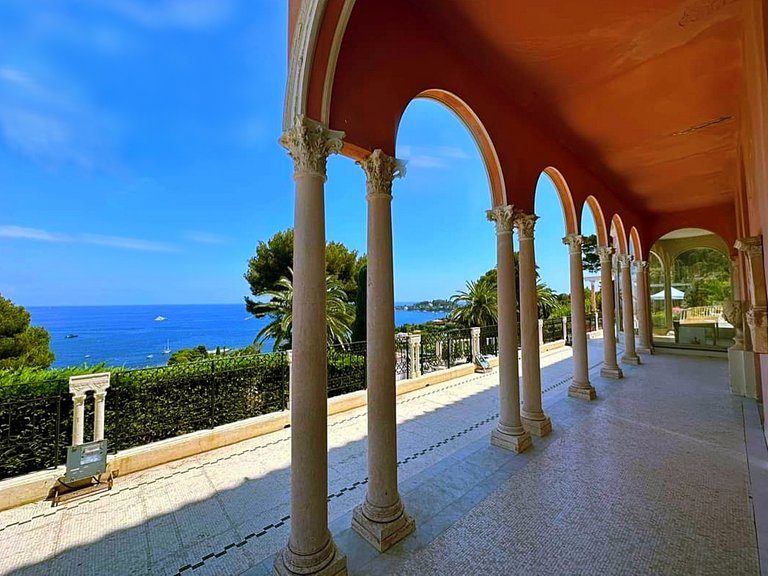
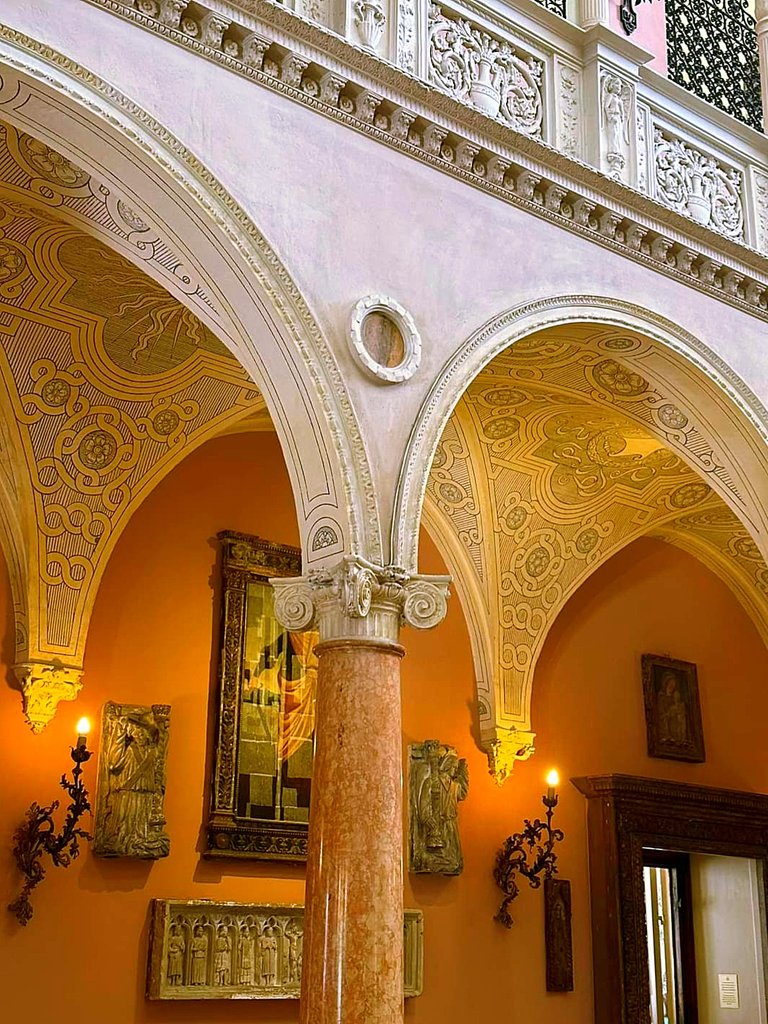

Inside the villa, of course, everything is expensive and rich. The small rooms of the villa are filled to overflowing with works of art, paintings, porcelain figurines. And the French furniture of the sixteenth - seventeenth century is amazing. Everything is very chic.
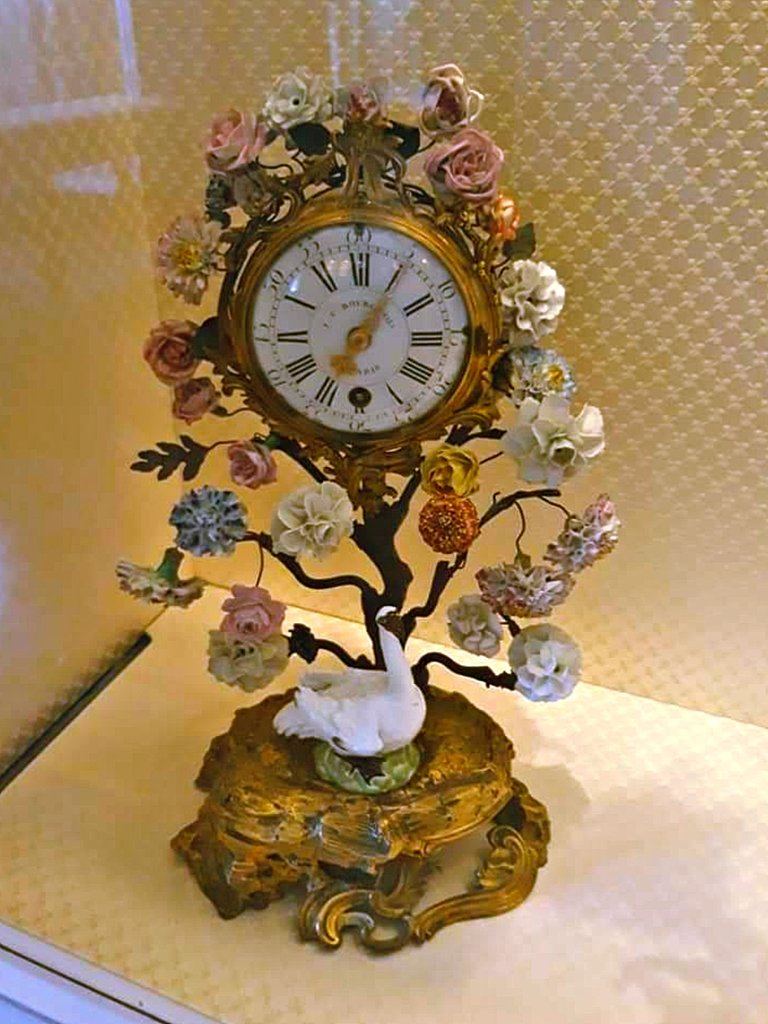
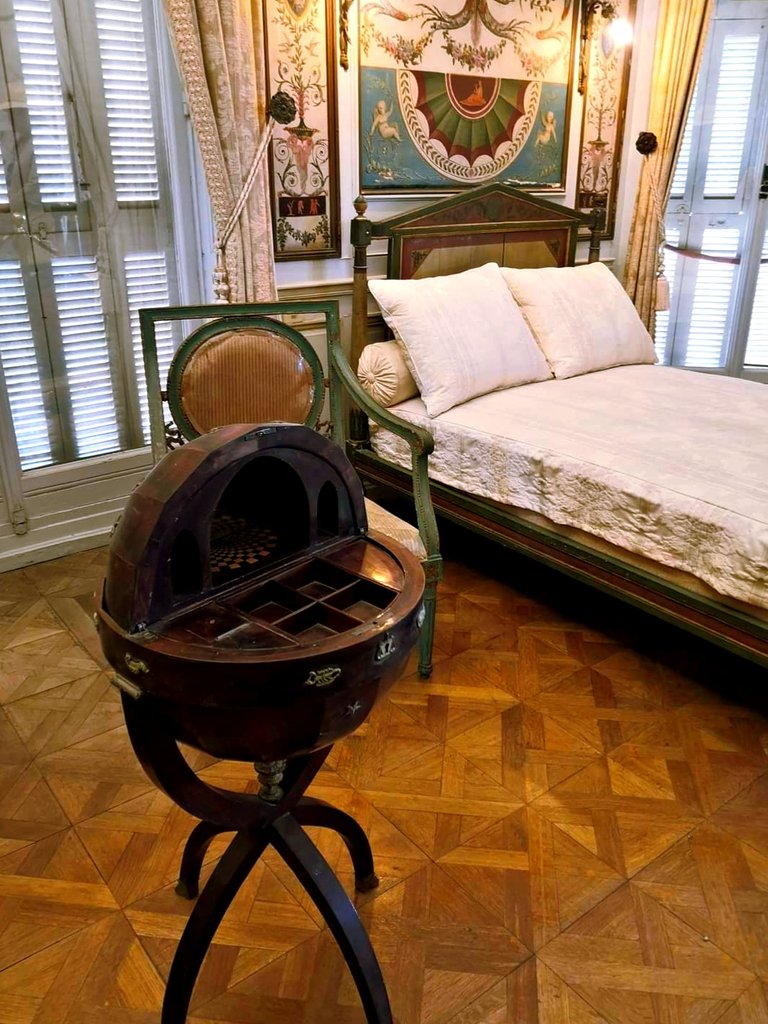
We enter the Grand Salon (aka the Salon of Receptions) and just keep silent, looking at the details. The level of luxury is simply over the top. These square meters represent the era of Louis XVI. And as a nice bonus from the Grand Salon - wonderful views of Beaulieu and Fourmy Bay.
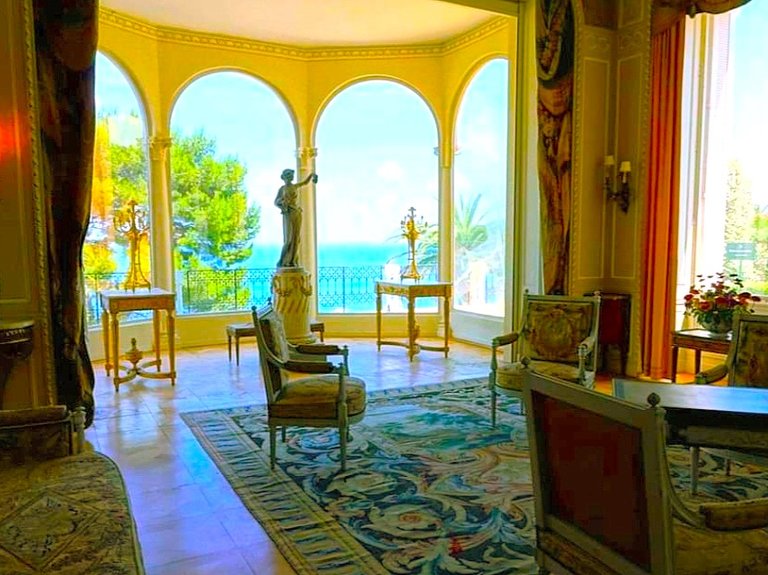


The Grand Salon is followed by the Petit Salon. In this salon, I really liked the tapestries with which the walls in the alcoves were upholstered. The tapestries depict scenes from the life of Don Quixote.

And here is the personal space of Beatrice de Rothschild - her boudoir. The walls of the boudoir are painted in the so-called Pompeian style. A secretary with bronze decor, made by the cabinetmaker of King Louis XVI, allegedly belonged to Marie Antoinette. Behind him, the baroness wrote letters.
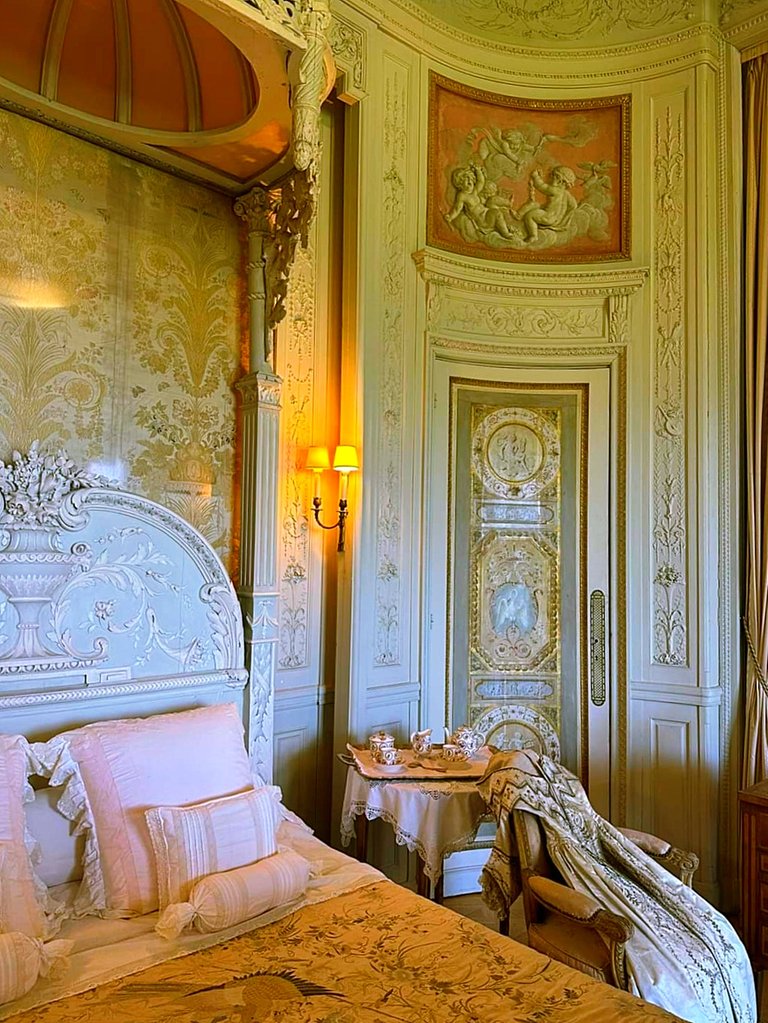
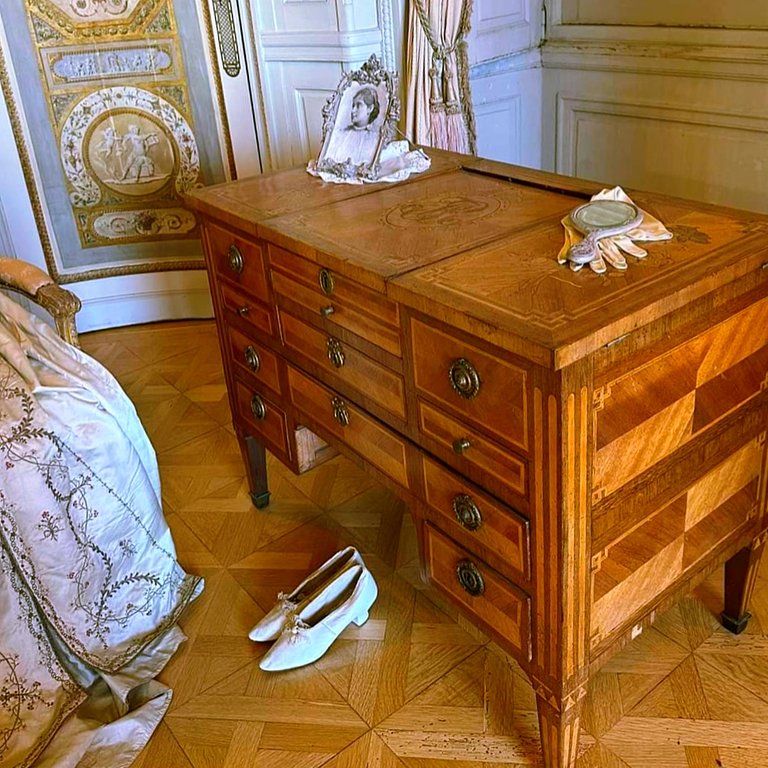

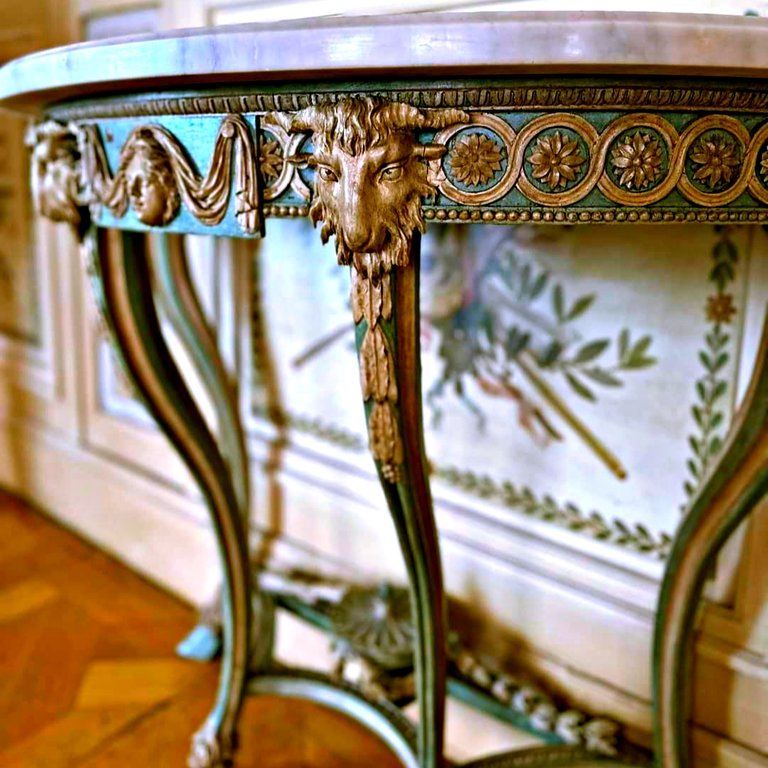

As a person who is not indifferent to porcelain, I paid great attention to the exhibits on this subject. The porcelain collection assembled by Beatrice de Rothschild is truly impressive and mesmerizing.


There are such rich people who have only money behind their souls and the goal is to show their “toughness” to the whole world but without a solid cultural baggage and with a plebeian aesthetics at the level of golden toilet bowls. Beatrice de Rothschild was a completely different person - a true connoisseur of high art. And every item she collects is a priceless masterpiece.

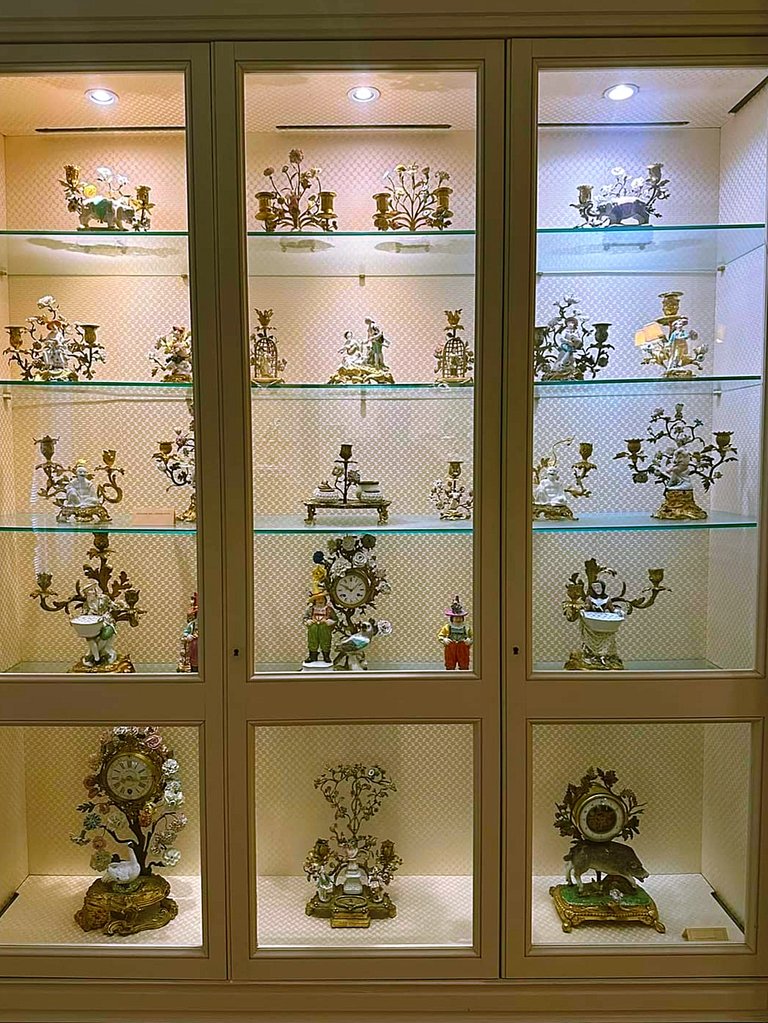
A year before the death of Beatrice (she died from tuberculosis), she bequeathed the villa and collections of all her possessions (5000 items in size) to the French Academy of Fine Arts, that is, she actually donated them to the state. Thus, the baroness acted in full accordance with her conviction: "Art is the honor of the native land."

With all the ambiguity of attitudes towards Beatrice and the Rothschilds, I think we need to thank her for this wonderful little world she invented, filled with beauty and harmony, for this amazing combination of art and nature. For the many real and eternal, and not imaginary masterpieces left by her to her homeland.

💝💝💝💝💝💝💝💝💝💝
With love, @madeirane
Photos are taken by me.
© 2023
Great design for the villa and the view is just perfectly amazing.
Thank you. I agree, the villa and gardens are amazing.
I am impressed. Thank you for this trip. The pics are beautiful and the text is informativ
You are welcome. Provence is amazing, it offers many beautiful places for tourists.
What an amazing villa, it has an interesting aesthetic with the pink paint and looks very nice.
Yes, the villa is truly impressive, but the gardens are just amazing. Thank you.
Congratulations, your post has been added to Pinmapple! 🎉🥳🍍
Did you know you have your own profile map?
And every post has their own map too!
Want to have your post on the map too?
Congratulations @madeirane! You have completed the following achievement on the Hive blockchain And have been rewarded with New badge(s)
Your next target is to reach 3250 upvotes.
You can view your badges on your board and compare yourself to others in the Ranking
If you no longer want to receive notifications, reply to this comment with the word
STOPCheck out our last posts: